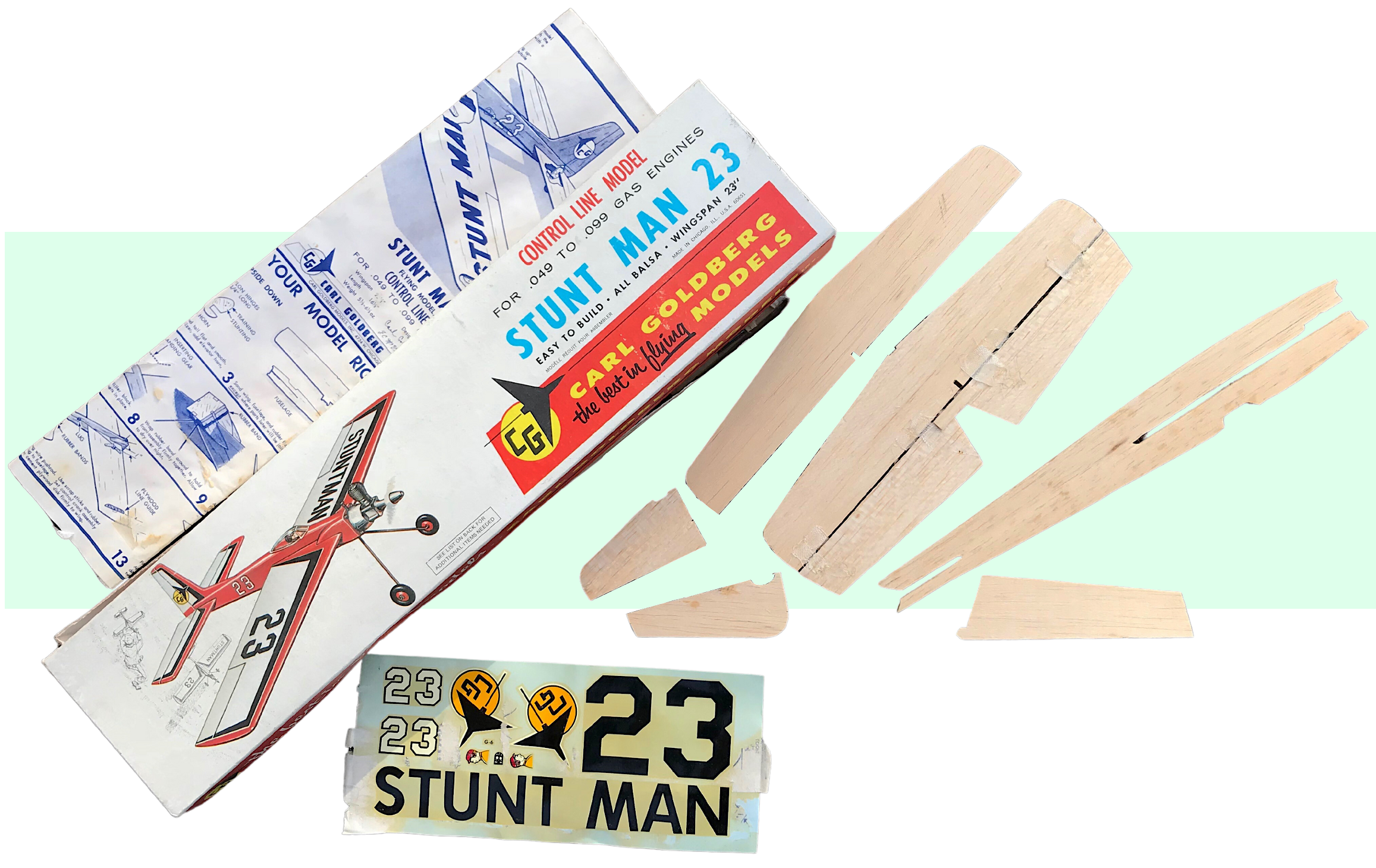
Museum Artifact: Stunt Man 23 Model Airplane Kit, c. 1970
Made By: Carl Goldberg Models, Inc., 4734 W. Chicago Ave., Chicago, IL [Austin]
Unless you’ve been a model airplane enthusiast at some point in your life, the name Carl Goldberg might not mean much to you. For several generations of young, aspiring aeronautical engineers, however, his work probably mattered more than anything Charles Lindbergh ever did. Sure, Goldberg never personally piloted an aircraft across the Atlantic or had ticker tape parades in his honor, but he also—for obvious reasons—never developed Lindbergh’s affinity for the Nazis, either. All things considered, we’ll take the model-maker of Chicago over the Spirit of St. Louis.
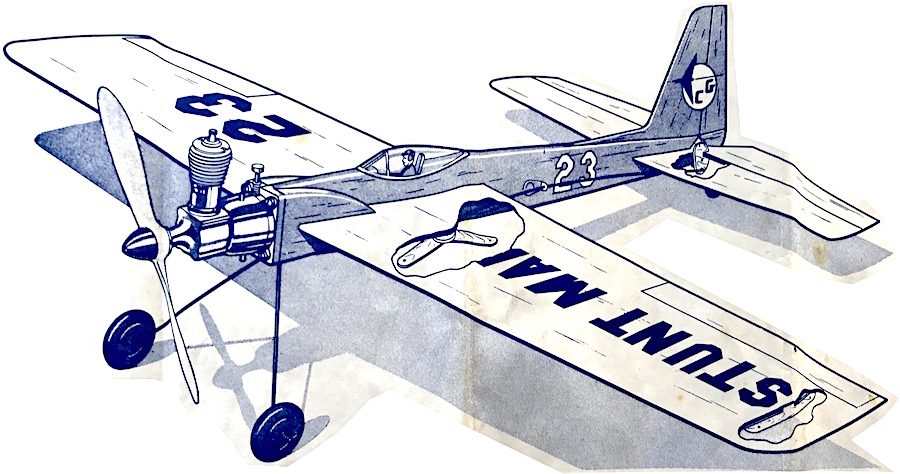 The Goldberg creation in our museum collection is an incomplete Stunt Man 23 “control line model” kit from the late ‘60s / early ‘70s. Made from super lightweight balsa wood with a wingspan of 23”, this plane was a popular entry-level option for performing basic aerial stunts with minimal complexities in the building process. It generally ran on a Cox .049 motor, and as a control line model, was operated by the user via a pair of wires connected to a handle—a cheaper and often simpler alternative to remote control.
The Goldberg creation in our museum collection is an incomplete Stunt Man 23 “control line model” kit from the late ‘60s / early ‘70s. Made from super lightweight balsa wood with a wingspan of 23”, this plane was a popular entry-level option for performing basic aerial stunts with minimal complexities in the building process. It generally ran on a Cox .049 motor, and as a control line model, was operated by the user via a pair of wires connected to a handle—a cheaper and often simpler alternative to remote control.
“The Stunt Man 23 is the simplest real stunt model yet,” according to the manual that came with the kit. “It’s rugged enough to get you through the training period. Any damage can be fixed with a tube of cement. With the Stunt Man, you’ll really enjoy flying upside down, and doing wing-overs, inside and outside loops, etc.”
A completed Stunt Man 23 only weighed about 6 ounces—maybe a tad more if you went overboard with the decals and/or a custom paint job. According to its manual, it was “designed and drawn” by four men from the team at Chicago’s Carl Goldberg Models, Inc., which by this point was headquartered at 4734 W. Chicago Avenue. Credit went to J.C. McVickar, E.H. Wargo, Charlie Bauer, and Carl Goldberg himself, who had already been well known in the business for nearly 40 years.
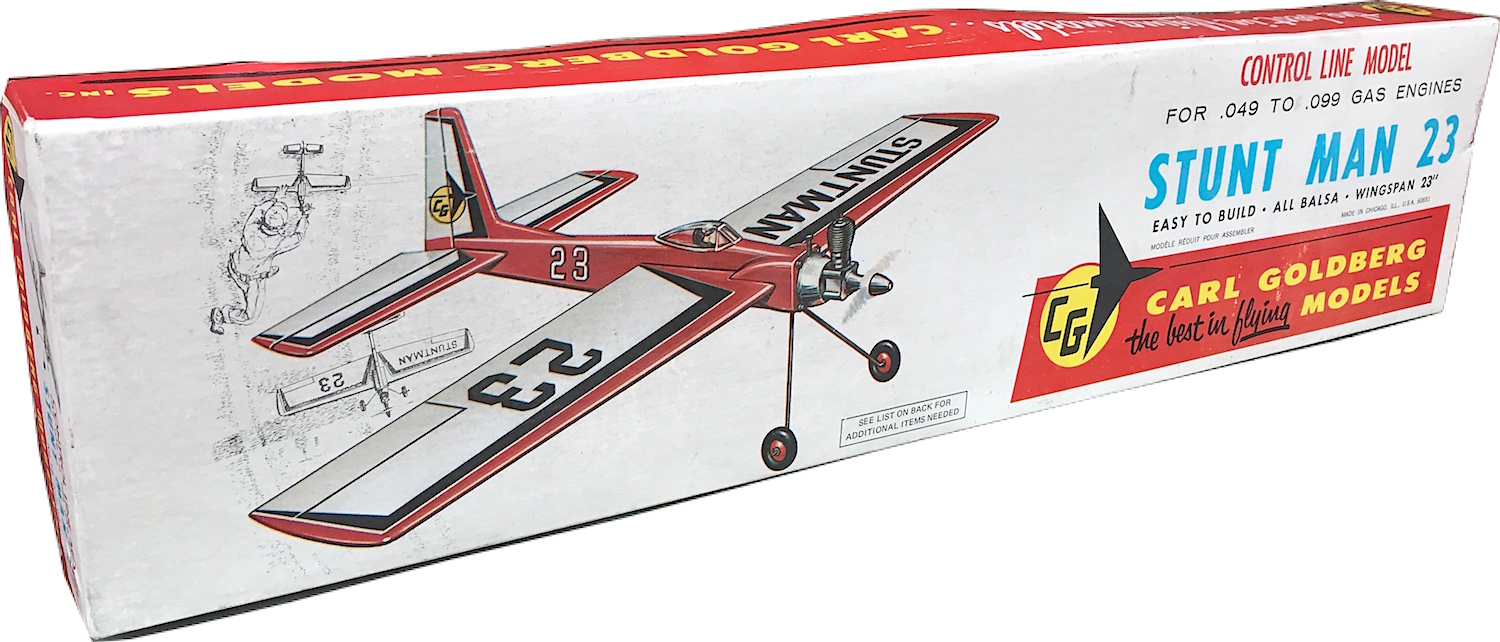
The Prodigy
“Brilliantly outlined by the spotlight of fame at only 26, Carl Goldberg, who was recently dubbed by Time Magazine, ‘chief model wizard in the United States,’ stands as a living example to American youth of the success which it is still possible to achieve in the United States, in spite of the viewpoint of some skeptics.” —Dayton Daily News, Feb 25, 1940
Toy airplanes have existed as long, if not longer, than airplanes themselves. But the model plane industry really took off (ugh) in the late 1920s, after the aforementioned Charles Lindbergh completed his first cross-Atlantic voyage. By that point, kids were no longer content to just hold a miniature plane in their hands and make woosh woosh sounds. They wanted to get their aircraft airborne like the genuine article, and they wanted to do so through their own superior craftiness, like the Wright Bros. of old.
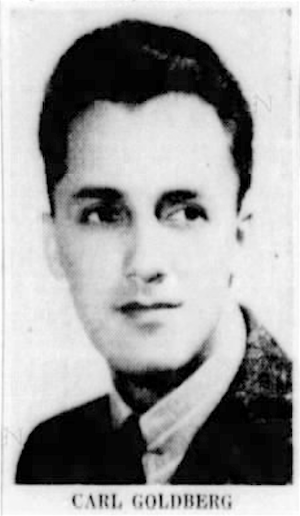 Carl Goldberg (1912-1985) started out as just one of those many thousands of amateur backyard aviators. Raised by a single mother in a small apartment in the Bronx, NY, he designed and built his first working plane in 1928, when he was 15. At that early stage, there weren’t a lot of pre-designed kits out on the market, so personal creativity and some level of engineering prowess went a long way in making your plane go a long way.
Carl Goldberg (1912-1985) started out as just one of those many thousands of amateur backyard aviators. Raised by a single mother in a small apartment in the Bronx, NY, he designed and built his first working plane in 1928, when he was 15. At that early stage, there weren’t a lot of pre-designed kits out on the market, so personal creativity and some level of engineering prowess went a long way in making your plane go a long way.
Within months, Carl was confident enough in his models to enter his first competition, racing other model crafts in the aerial equivalent of a soap box derby. By 1935, he had entered 30 such contests, and had won 26 of them. Perhaps even more impressive was the proliferation of his designs, which were rapidly adopted by other model makers across the country. Many of those youngsters, by no coincidence, started winning their own contests with Goldberg planes.
During this gradual rise to cult status in the model plane world, Goldberg enrolled in the engineering program at the University of Wisconsin in 1931, just as Lindbergh had done a decade prior. With money tight, however, academics soon took second fiddle to Carl’s role as an ambassador for his “sport,” and he eventually dropped out of school to settle in the model airplane hotbed of Chicago, where he established his own hobby shop and expanded an upstart mail order business he’d started in college. From here, Goldberg quickly transitioned from a young “enthusiast” into the man American Modeler Magazine would dub “Mr. Modeling.”
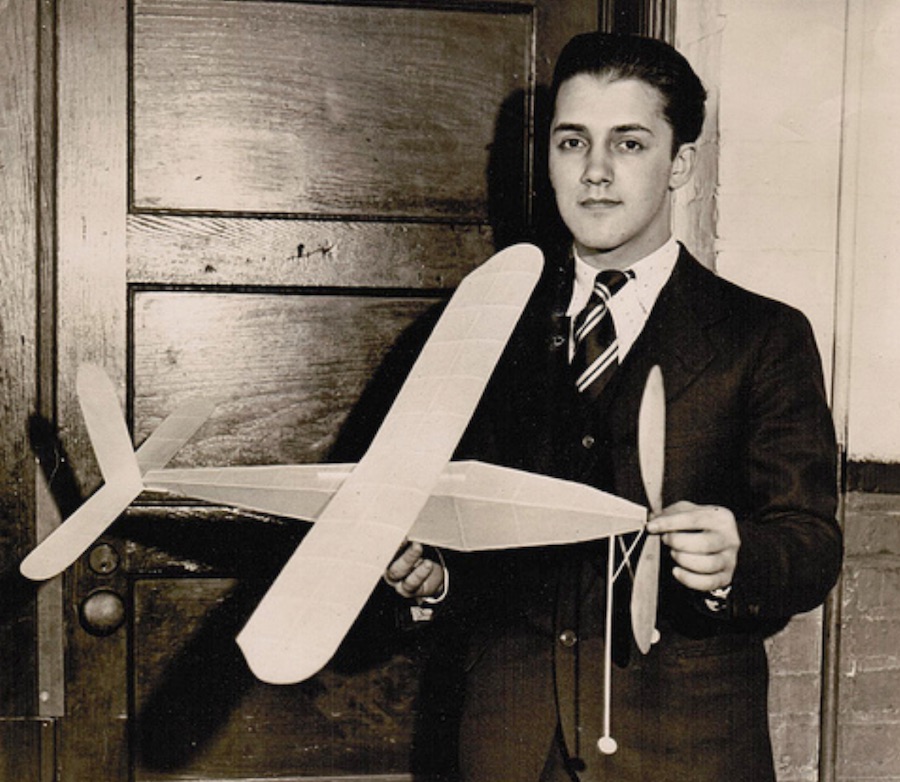 [Carl Goldberg during his early flying days in the 1930s. from Model Aviation magazine]
[Carl Goldberg during his early flying days in the 1930s. from Model Aviation magazine]
The Aeronuts
“It was on a very dark Saturday evening, in November 1935, when a group of eight young men met in the field house of Dvorak Park, with but one intention. That of forming and organizing the foremost model airplane organization in the United States. At their first meeting they chose the name Chicago Aeronuts, and as their leader they chose Carl Goldberg, who because of his executive ability and extensive knowledge of aeronautics has been retained in that office since that date.” —Chicago Aeronuts Bulletin, Vol. 1, No. 7, March 1937
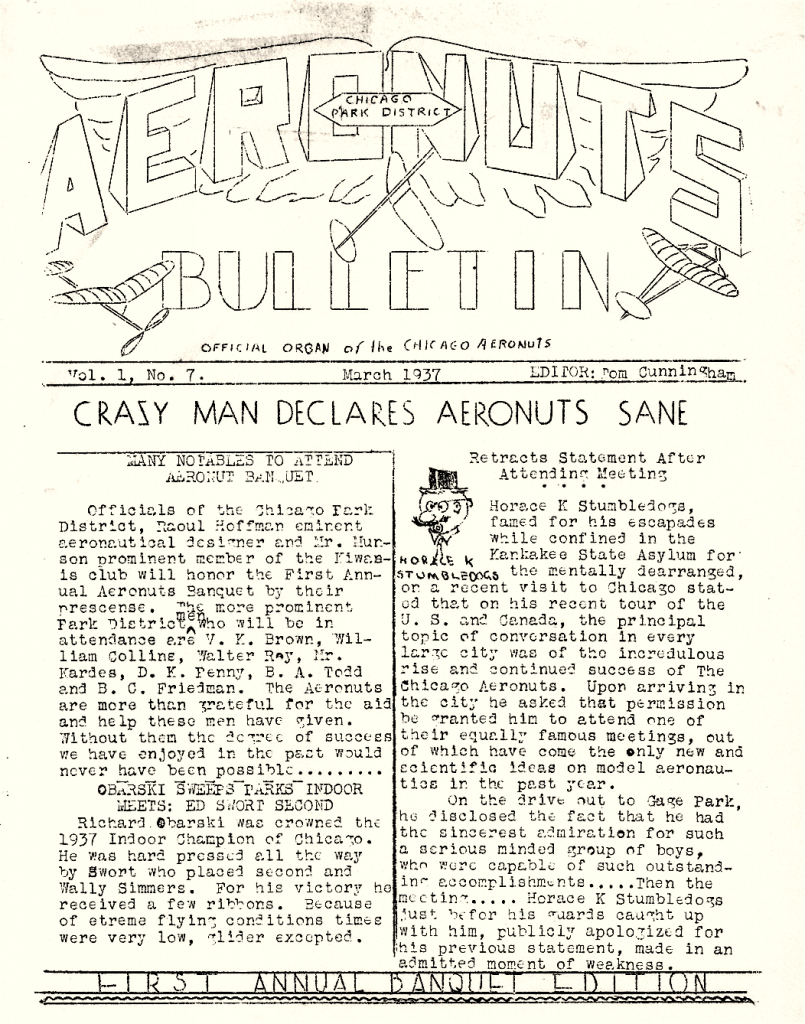 Living in an apartment at 4720 N. Lawndale Avenue in Albany Park, Carl Goldberg would have had a bit of a lengthy trip to get down to Pilsen for that initial meeting of the Chicago Aeronuts club, but suffice it to say, his reputation preceded him. Carl’s other Chicago-based organization, the Central Gas Modelplane Society, was already grabbing attention in national publications like Flying Magazine, and any association with the 23 year-old now meant instant street cred for any group of propellerheads.
Living in an apartment at 4720 N. Lawndale Avenue in Albany Park, Carl Goldberg would have had a bit of a lengthy trip to get down to Pilsen for that initial meeting of the Chicago Aeronuts club, but suffice it to say, his reputation preceded him. Carl’s other Chicago-based organization, the Central Gas Modelplane Society, was already grabbing attention in national publications like Flying Magazine, and any association with the 23 year-old now meant instant street cred for any group of propellerheads.
As such, from the Chicago Aeronuts’ inception, the club represented the cutting edge in model airplane design, debate, and flying skill. As a separator from many similar organizations, they also prided themselves on a policy of transparency—never selfishly keeping new developments away from the general public or rival flyers.
The Aeronuts had multiple record holders in the club, but Goldberg was always the most prominent among them, particularly after another national indoor championship in 1937. His first gas-powered model plane, the Valkyrie, had debuted to much fanfare a year prior, and by 1938, its follow-up, the Zipper, became a sensation.
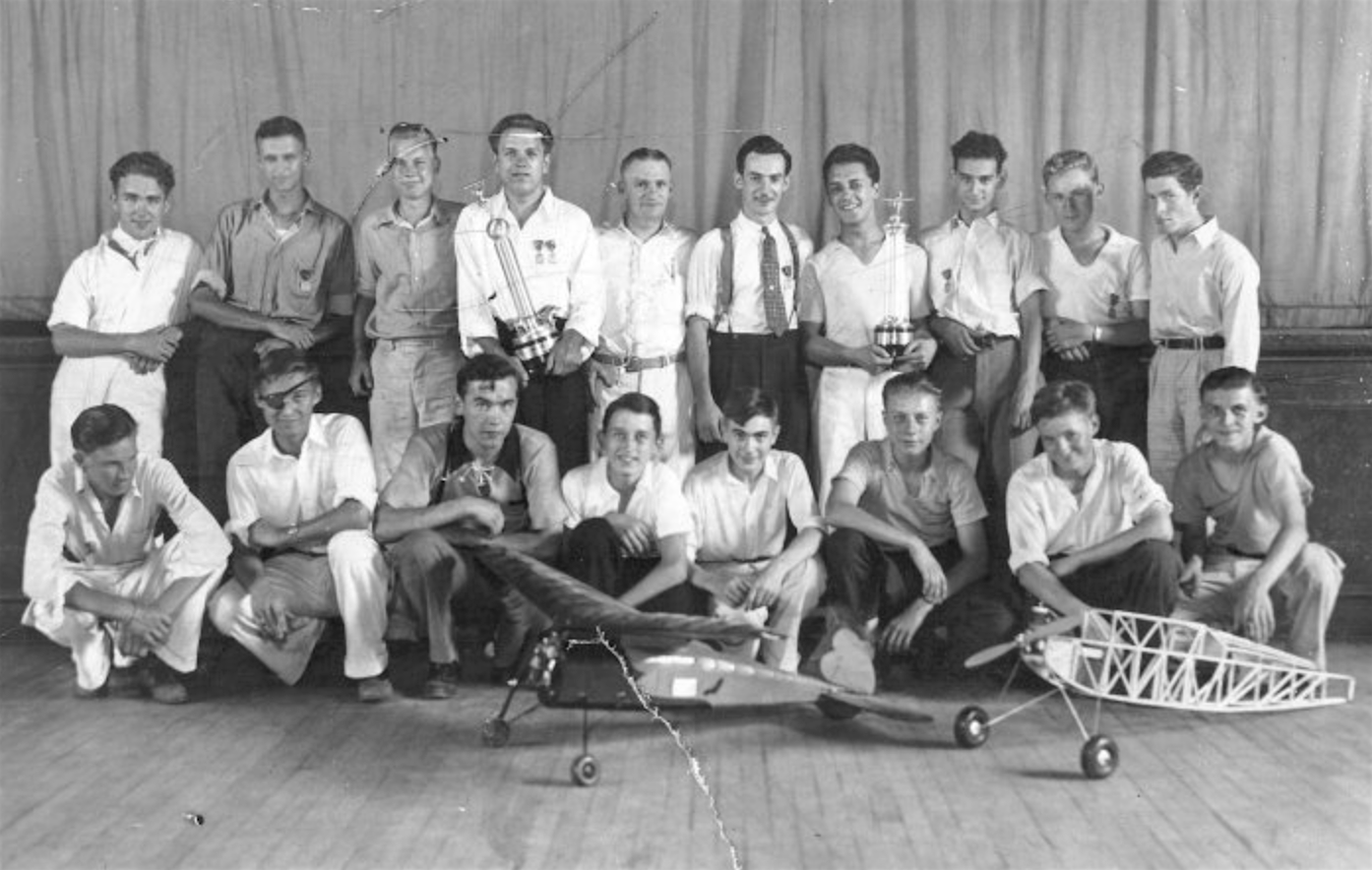 [The Chicago Aeronuts club in 1936, courtesy of chicagoaeronuts.com. Back Row: Tom Cunningham, Joe Konefes, Alex Johnson, Joe “Pappy” Matulis, John Bock, Frank Nekimken, Carl Goldberg, Sid Axlerod, Leon Klesman, (unknown). Front Row: C Bell, Dick Obarski, Gerald Ritz, (unknown), Elic (Alex) Nekimken, (unknown), Milt Huguelet, Ed Kovaleski]
[The Chicago Aeronuts club in 1936, courtesy of chicagoaeronuts.com. Back Row: Tom Cunningham, Joe Konefes, Alex Johnson, Joe “Pappy” Matulis, John Bock, Frank Nekimken, Carl Goldberg, Sid Axlerod, Leon Klesman, (unknown). Front Row: C Bell, Dick Obarski, Gerald Ritz, (unknown), Elic (Alex) Nekimken, (unknown), Milt Huguelet, Ed Kovaleski]
Catching On With Comet
Keeping a close eye on all these developments was a trio of fellow Chicagoans: Bill Bibichkow, Sam Goldenberg, and Louis Knapp—the operators of the Comet Model Airplane and Supply Company, located at 2509 W. Cermak Rd.
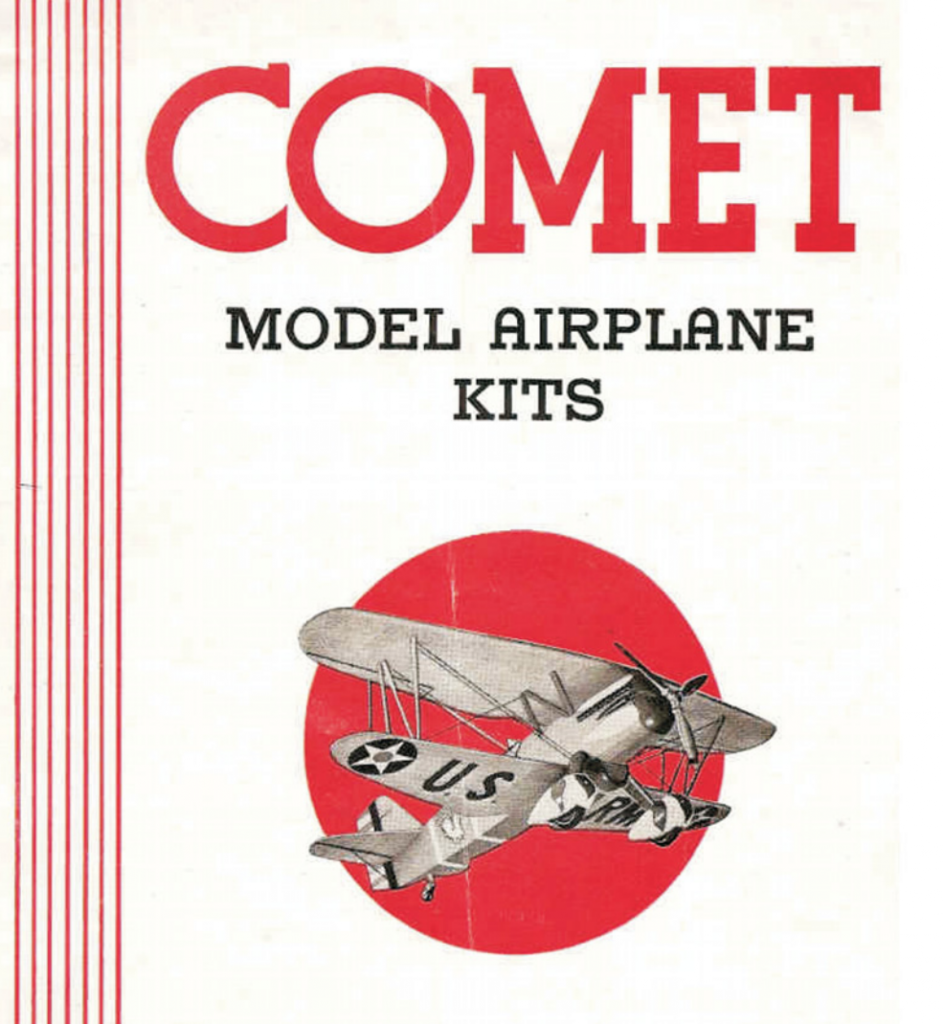 Like Carl Goldberg, Bibichkow (aka Bill Bishop) and Goldenberg had started out as teenage enthusiasts in the wake of Lindbergh, forming their own model plane business on the West Side in 1929 with a starting capital of five bucks. The two Crane Tech high school students brought in Knapp as their first lead salesman, and within a decade, built the nation’s foremost model kit manufacturing business, employing 300 workers and grossing close to $1 million annually.
Like Carl Goldberg, Bibichkow (aka Bill Bishop) and Goldenberg had started out as teenage enthusiasts in the wake of Lindbergh, forming their own model plane business on the West Side in 1929 with a starting capital of five bucks. The two Crane Tech high school students brought in Knapp as their first lead salesman, and within a decade, built the nation’s foremost model kit manufacturing business, employing 300 workers and grossing close to $1 million annually.
Game recognizing game, the guys at Comet (with Knapp now serving as president) finally hired the famed Carl Goldberg to join their design staff in 1939, just ahead of a new enthusiasm for model aircraft spurred by the flying machines of World War II. It was a mighty fruitful partnership.
“Last week, partners Goldenberg and Bibichkow made an announcement,” Time Magazine reported in August of 1939,
“for the 1940 model year (which begins next month) Comet Model Airplane & Supply Co., Inc. will double its 1939 output, will bundle up 10,000,000 model sets to be put together and flown by youngsters and hobby-minded oldsters.
“. . . Over the boards, six draftsmen and eight designers wield pen and T square turning out drawings for scale models of most U.S. military and commercial airplanes in the air today, as well as many a foreign model. . . . Bibichkow [treasurer and director of model design] is proudest of Comet’s crack designer, 26-year-old Carl Goldberg, who won five of the six first places in the National Aeronautic Association model contest at Detroit last month, brought three cases full of trophies along with him when he gave up his amateur standing, and went to work as a professional model builder.”
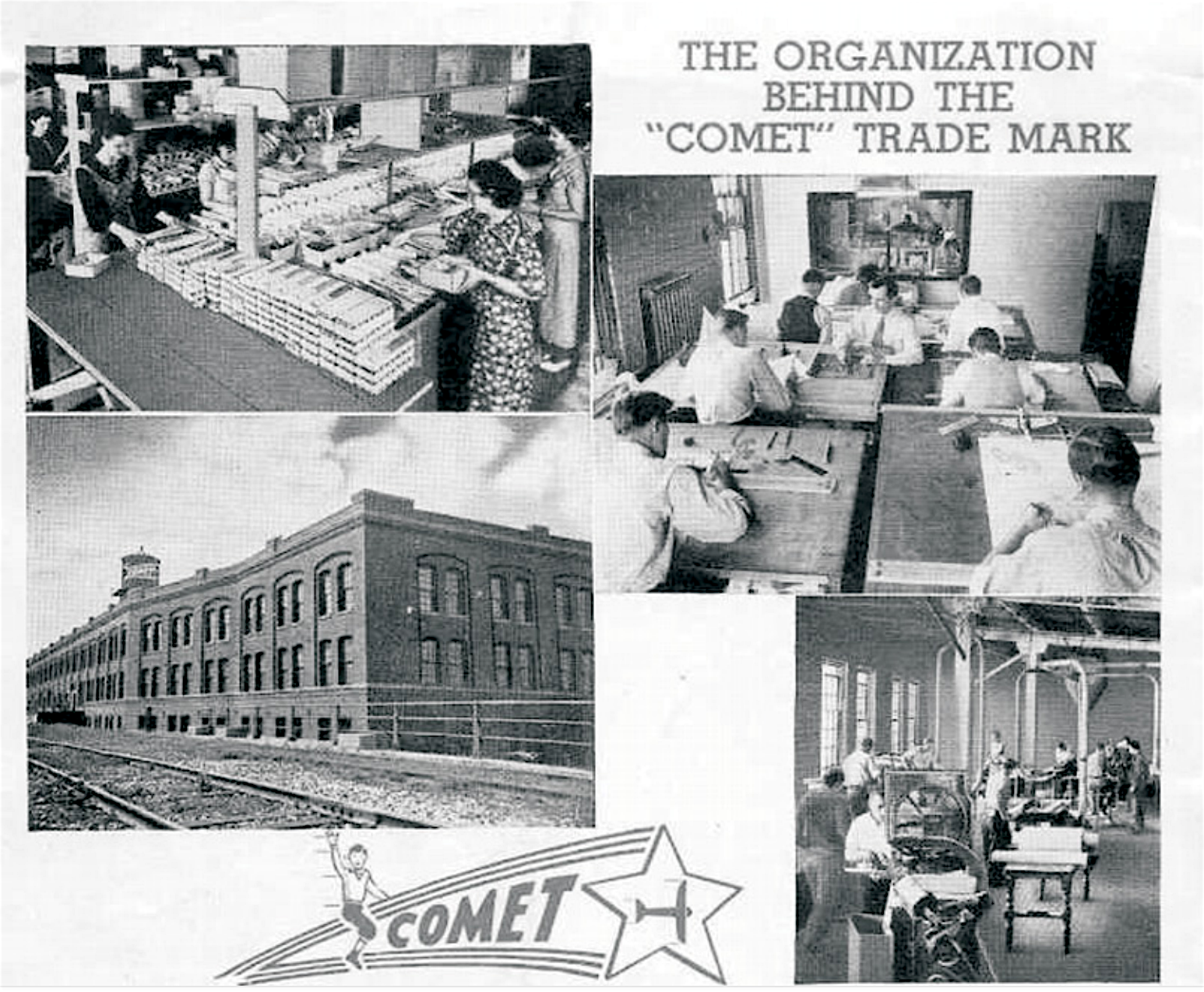 [ABOVE: Inside Comet’s Chicago factory at 2509 W. Cermak Rd., from the company’s 1936 catalog. “Every draftsman is a champion model-builder,” the catalog claimed. “He knows the problems of model-building–that’s why Comet kits are perfectly designed and engineered–a pleasure to build and a joy to the eye. Plans are carefully checked by the Master Designer for simplicity, ease of construction, and details. Every model is built and tested–just like a real airplane–before it is released.”]
[ABOVE: Inside Comet’s Chicago factory at 2509 W. Cermak Rd., from the company’s 1936 catalog. “Every draftsman is a champion model-builder,” the catalog claimed. “He knows the problems of model-building–that’s why Comet kits are perfectly designed and engineered–a pleasure to build and a joy to the eye. Plans are carefully checked by the Master Designer for simplicity, ease of construction, and details. Every model is built and tested–just like a real airplane–before it is released.”]
[BELOW: 1940 Ad for Carl Goldberg’s most famed Comet model, the Zipper gas model, which sold for $4.50]
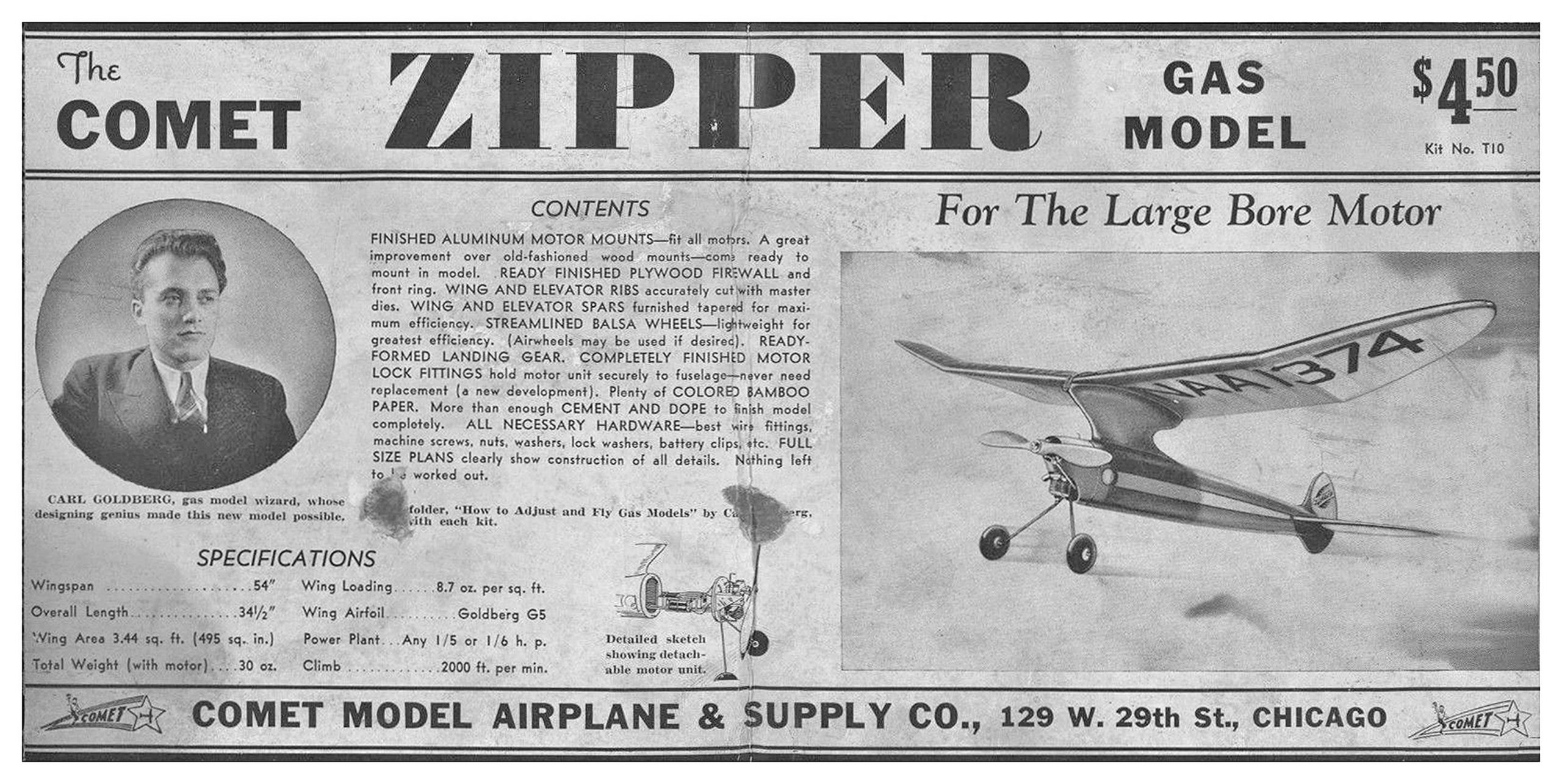 Along with aggressively advertising Goldberg’s new plane designs—including the top-selling Clipper and Zipper models—Comet (which by now had moved to 129 W. 29th Street) also helped fund national speaking tours that saw Carl imparting his knowledge to young admirers in towns big and small.
Along with aggressively advertising Goldberg’s new plane designs—including the top-selling Clipper and Zipper models—Comet (which by now had moved to 129 W. 29th Street) also helped fund national speaking tours that saw Carl imparting his knowledge to young admirers in towns big and small.
When the U.S. finally did enter the war, Goldberg and Comet contributed to the effort in a unique way. With balsa wood rationing hindering their usual production, the company entered into new contracts with the U.S. Navy and the Department of Education to produce 1/72 scale models of actual aircraft in service during the war (first made of basswood, then injected molded plastic). The goal, according to Comet designer Robert Reder (future founder of Monogram Models), was to help Americans “recognize and identify aircraft flying overhead to determine if they were friend or foe.” These models were used in the training of military pilots, gunners, and spotters, along with educating the civilian population.
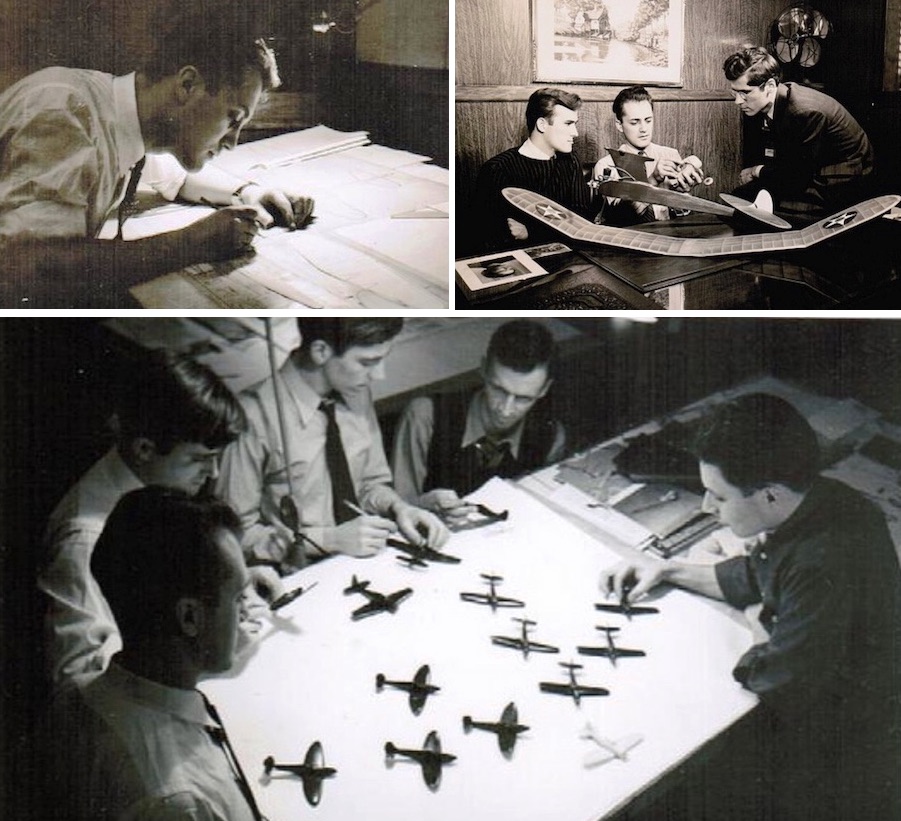 [Top Left: Goldberg at the drafting board, Top Right: Goldberg with fellow Comet designers Al Horbach and Robert Reder, Bottom: Comet designers with WWII aircraft identification models]
[Top Left: Goldberg at the drafting board, Top Right: Goldberg with fellow Comet designers Al Horbach and Robert Reder, Bottom: Comet designers with WWII aircraft identification models]
One of Goldberg’s former Comet co-workers and fellow Aeronuts was Charles I. Kilvans, who shared his memories in a 2000 interview with Academy of Model Aeronautics researcher Evan T. Towne. “While attending the Illinois Institute of Technology, John Bock and I worked part-time at Comet for Carl,” Kilvans said. “We helped build the model wind tunnels that Comet sold to the government. . . . I remember Carl most as a teacher. We would meet in the Gage Park Field House regularly before being caught in the draft [for World War II]. He would start the meeting with an aerodynamics lesson, then we would have a low ceiling hand-launch glider contest with the winner receiving good balsa wood. You had to throw the glider so it flew in the rafters without hitting. Over 22 seconds usually won. [pictured below: Carl Goldberg during a typical Chicago winter, 1940s]
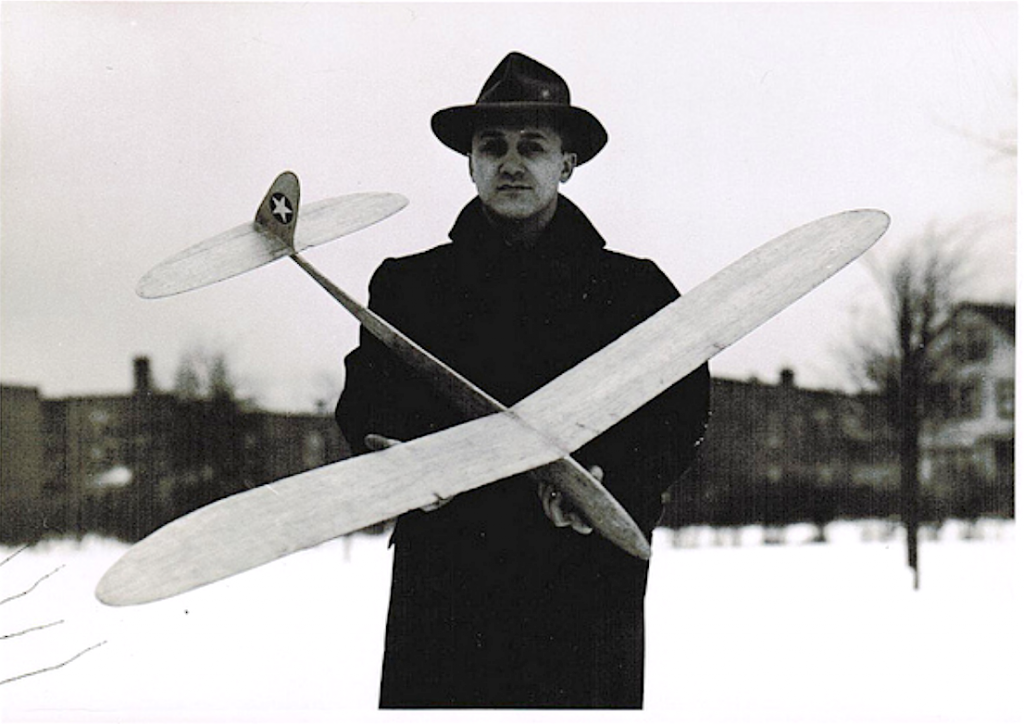 “At one weekly glider flying session at a nearby park, Carl showed up with a three-foot span all-balsa towline that ended up in the top of a Chicago elm. Carl hired a youngster to get it down, but when the kid got up there, the height frightened him and he refused to get the model. Finally, Carl went up the tree, out on a limb and retrieved it.”
“At one weekly glider flying session at a nearby park, Carl showed up with a three-foot span all-balsa towline that ended up in the top of a Chicago elm. Carl hired a youngster to get it down, but when the kid got up there, the height frightened him and he refused to get the model. Finally, Carl went up the tree, out on a limb and retrieved it.”
Goldberg was a perfectionist, and a bit intense, but he managed to charm most of the folks he worked with. That included a secretary at the Comet offices named Beth—a cousin of Louis Knapp. Carl and Beth married and had two kids, Bob and Carol. In a 2012 interview with Model Aviation magazine, Carol described her late father as “an original thinker. He really didn’t believe in putting limits to creation or imagination. It’s clear to me that he excited people with what he was able to accomplish that hadn’t been done before.”
Top Flite
After the war, Goldberg ended his run with Comet to start a business with two fellow ex-Comet partners, Sid Axelrod and Mike Schlesinger. The new company, known as American Hobby Specialties Inc. (2635 S. Wabash Ave.) soon evolved into Top Flite Models, which became a leading rival of Comet over the next few decades.
In December of 1953, wire service reporter Lloyd Settle reported on a new rubber-band powered model plane that was said to speed along at 50 miles per hour. “In a hobby shop near the heart of Chicago,” Settle wrote, “we learned the model had been designed by one Carl Goldberg. Known to thousands of miniature aviation enthusiasts in the U.S. and Canada, the graying ‘champ’ of yesterday [Goldberg was now 41] is president of Top Flite Models, Inc.

“The soft-spoken manufacturer gave years of thought to designing the glider that would look like an airplane and still have the speed so important to a young man. ‘A man always return to his own experiences in these things,’ Carl explained later. ‘I always wanted to design a model that any boy could build in a couple of hours and be sure that it would fly. I wanted it inexpensive enough to meet anyone’s budget, and strong enough to assure the boy that his investment was sound.’”
According to his daughter Carol Lieberman, Goldberg was “reluctant to charge more than necessary for his products because he felt they should be obtainable for everyone.” In her interview in Model Aviation, Lieberman said this likely stemmed from the fact that Carl’s father left his mother when he was a 1-year-old, and she struggled to raise him on her own.
The desire to keep prices low and quality high likely led to Goldberg’s split from Top Flite, and the subsequent creation of his own business, Carl Goldberg Models, Inc., established with his wife in 1955.
Carl Goldberg Models, Inc.
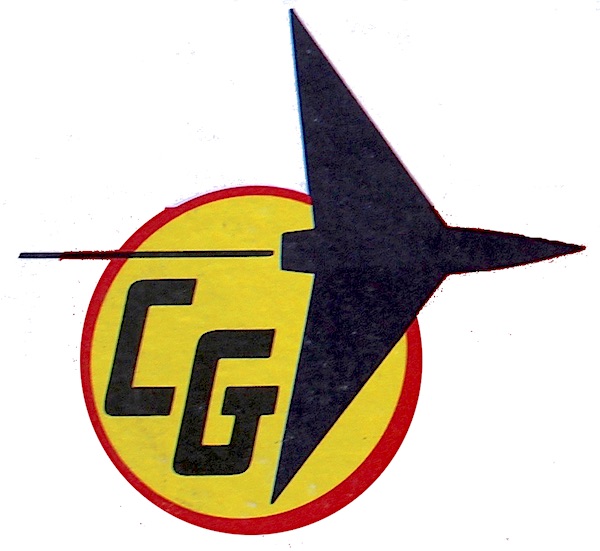 Having already helped elevate two Chicago manufacturers to national prominence, Goldberg now faced the challenge of trying to compete with his own monsters in a way. Comet and Top Flite were still doing well in the 1950s and ‘60s, and it took a while for Carl Goldberg Models, Inc. to catch up. Young aviators no longer remembered Carl’s 1930s glory days, but—thanks to his annual appearances at “Nats” (National Aeromodeling Championships) and the success of his son Bob in some competitions—the Goldberg name was still at the forefront of the industry.
Having already helped elevate two Chicago manufacturers to national prominence, Goldberg now faced the challenge of trying to compete with his own monsters in a way. Comet and Top Flite were still doing well in the 1950s and ‘60s, and it took a while for Carl Goldberg Models, Inc. to catch up. Young aviators no longer remembered Carl’s 1930s glory days, but—thanks to his annual appearances at “Nats” (National Aeromodeling Championships) and the success of his son Bob in some competitions—the Goldberg name was still at the forefront of the industry.
The CGM headquarters was initially located at the corner of Rockwell and Cermak Rd in South Lawndale (interestingly, within the former Comet factory). By the early ‘70s, the business moved to 4734 W. Chicago Avenue, where it would remain into the 1990s. Goldberg and his family had become Southsiders themselves during the ‘50s, living in a home at 9849 S. Claremont. Wife Beth, along with the kids, were regular contributors to the family business, helping to keep the warehouse running and every shipment going out on time. By the late 1960s, the company found its niche, as designs like the Falcon, Shoestring, Ranger, Viking, Skylark, Wizard, Swordsman, and Junior Tiger sold well. The company even made a scale model of Lindbergh’s old Spirit of St. Louis.
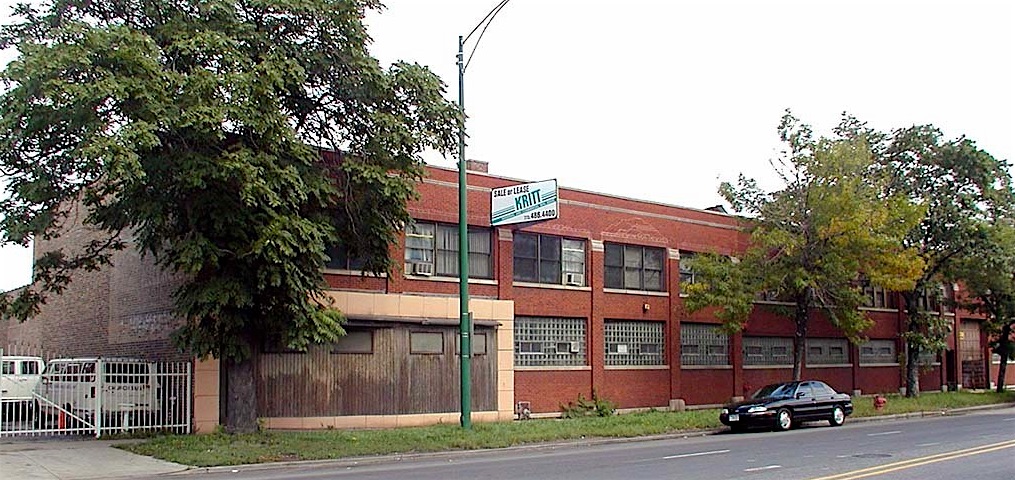
[Above: The former Goldberg Models building at 4734 W. Chicago Ave.]
[Below: Some of Goldberg’s many models from the ’60s/70s, courtesy of oldmodelkits.com]
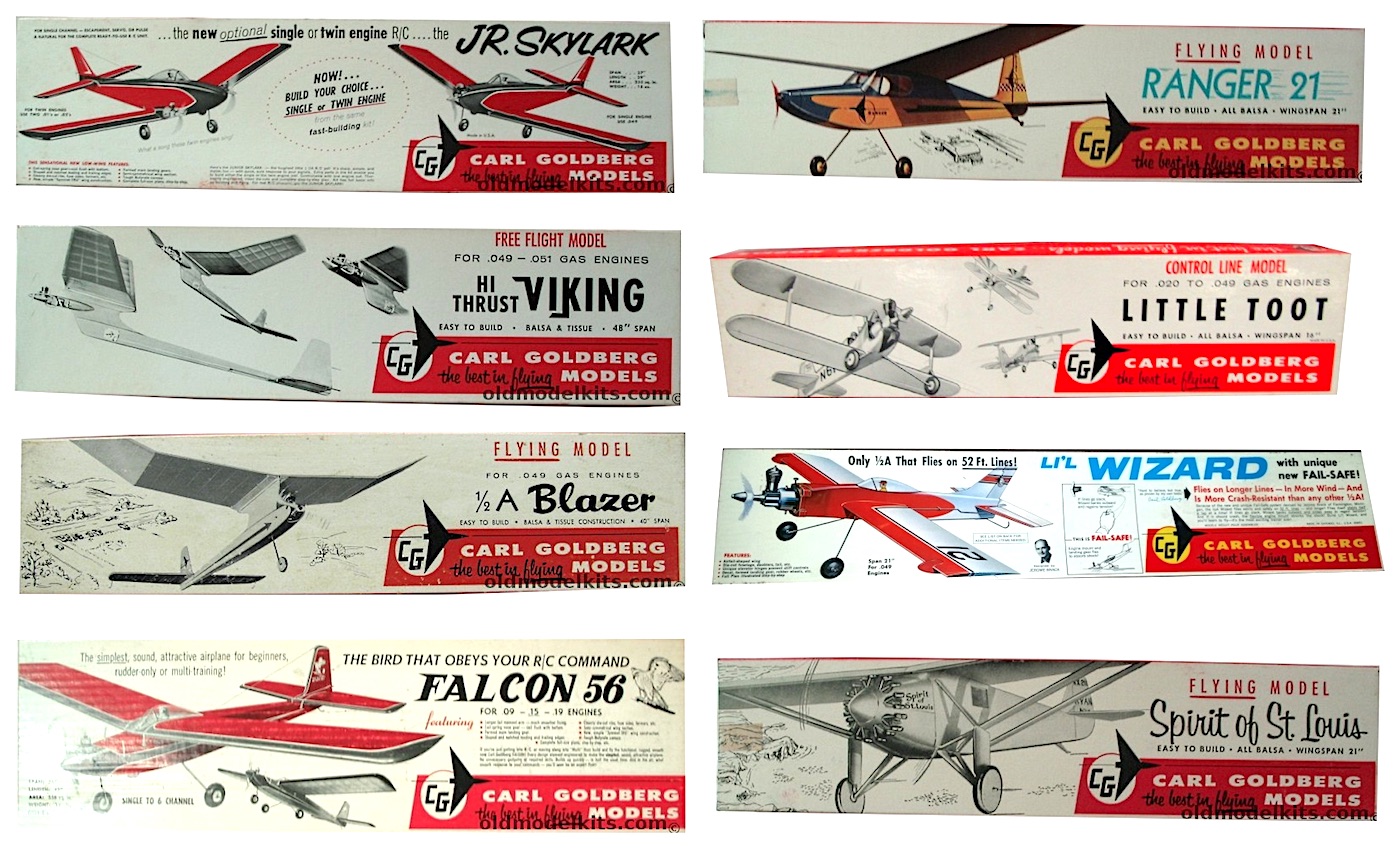 After Carl Goldberg finally went into semi-retirement and moved to California in 1976, he still remained in constant contact with the new company president, his son-in-law Dan Lieberman, and never stopped working on new designs. In 1981, at the age of 69, Goldberg finally got a pilot’s license to fly a proper, full-size glider from the controls, rather than the ground. Unfortunately, that same year, he had to undergo open heart surgery, and in the process of receiving 17 blood transfusions, was infected with a serious virus that was later identified as one of the early cases of AIDS. He died on January 21, 1985.
After Carl Goldberg finally went into semi-retirement and moved to California in 1976, he still remained in constant contact with the new company president, his son-in-law Dan Lieberman, and never stopped working on new designs. In 1981, at the age of 69, Goldberg finally got a pilot’s license to fly a proper, full-size glider from the controls, rather than the ground. Unfortunately, that same year, he had to undergo open heart surgery, and in the process of receiving 17 blood transfusions, was infected with a serious virus that was later identified as one of the early cases of AIDS. He died on January 21, 1985.
Dan and Carol Lieberman carried on the business of Carl Goldberg Models and found ongoing success for a while. By the mid 1980s, the Chicago Avenue factory employed 45 workers and was pulling in $3.5 million in annual sales—not bad for a business trying to compete with video games and increasingly advanced RC toys. [pictured below: CGM president Dan Lieberman (right) with VP Dave Patrick and a “Piper Cub” model plane, 1986]
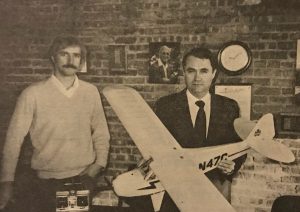 “We have a good thing here, and we want to keep it,” Dan Lieberman told a reporter in 1985, noting a successful incentives plan he’d introduced for the company’s employees. “We want to grow. We can only get that by getting all our people doing the best job they can.”
“We have a good thing here, and we want to keep it,” Dan Lieberman told a reporter in 1985, noting a successful incentives plan he’d introduced for the company’s employees. “We want to grow. We can only get that by getting all our people doing the best job they can.”
In a feature the following year in the Greater North Pulaski Business Times, Lieberman acknowledged that the “original market” for model planes—“patient youngsters”—had shifted to include a lot more “impatient adults.”
As a result, later Goldberg models were often simpler in design, with fewer parts and reduced assembly time. While Lieberman predicted onward growth into the ‘90s, it soon became clear that there would be no return to the halcyon days of the model flying business. Kids had become every bit as impatient as their parents, and digital alternatives continued to pummel the “traditional” toy market (not that model planes were ever considered “toys” by anyone who flew them).
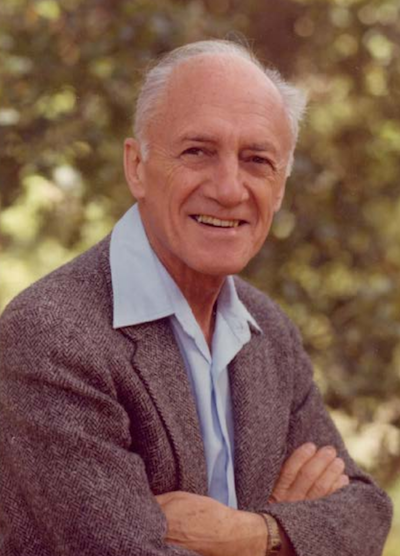 Carol Lieberman took more of a lead role in the business in the late ‘90s, but finally elected to sell her father’s company to the RC company Lanier in 2002. Both Lanier and its Goldberg properties were then subsequently purchased by the Great Planes Model Manufacturing Company of Champaign, IL. This kept some “classic” Goldberg designs in circulation into the 21st century, but for dedicated hobbyists, the original models are still where it’s at. For them, the legend of Carl Goldberg lives on.
Carol Lieberman took more of a lead role in the business in the late ‘90s, but finally elected to sell her father’s company to the RC company Lanier in 2002. Both Lanier and its Goldberg properties were then subsequently purchased by the Great Planes Model Manufacturing Company of Champaign, IL. This kept some “classic” Goldberg designs in circulation into the 21st century, but for dedicated hobbyists, the original models are still where it’s at. For them, the legend of Carl Goldberg lives on.
“He had this huge respect for life, all life,” his daughter Carol said in 2012. “He believed all people have creativity within them and they needed to be nurtured. He believed all people had the same basic desires for a good life and deserved a good life. He just took people for the best that was in them.”
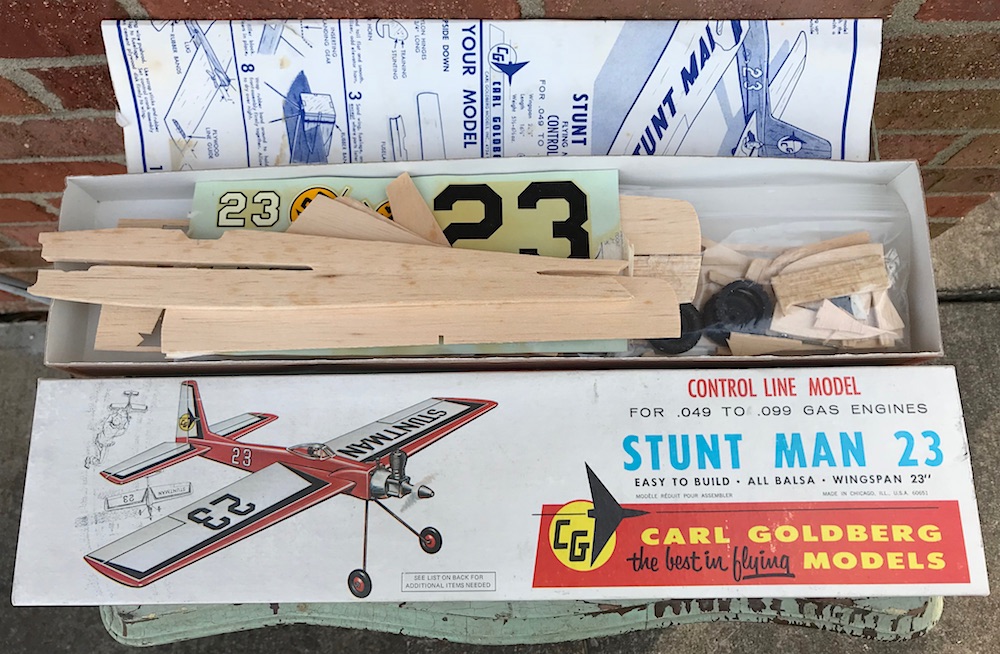
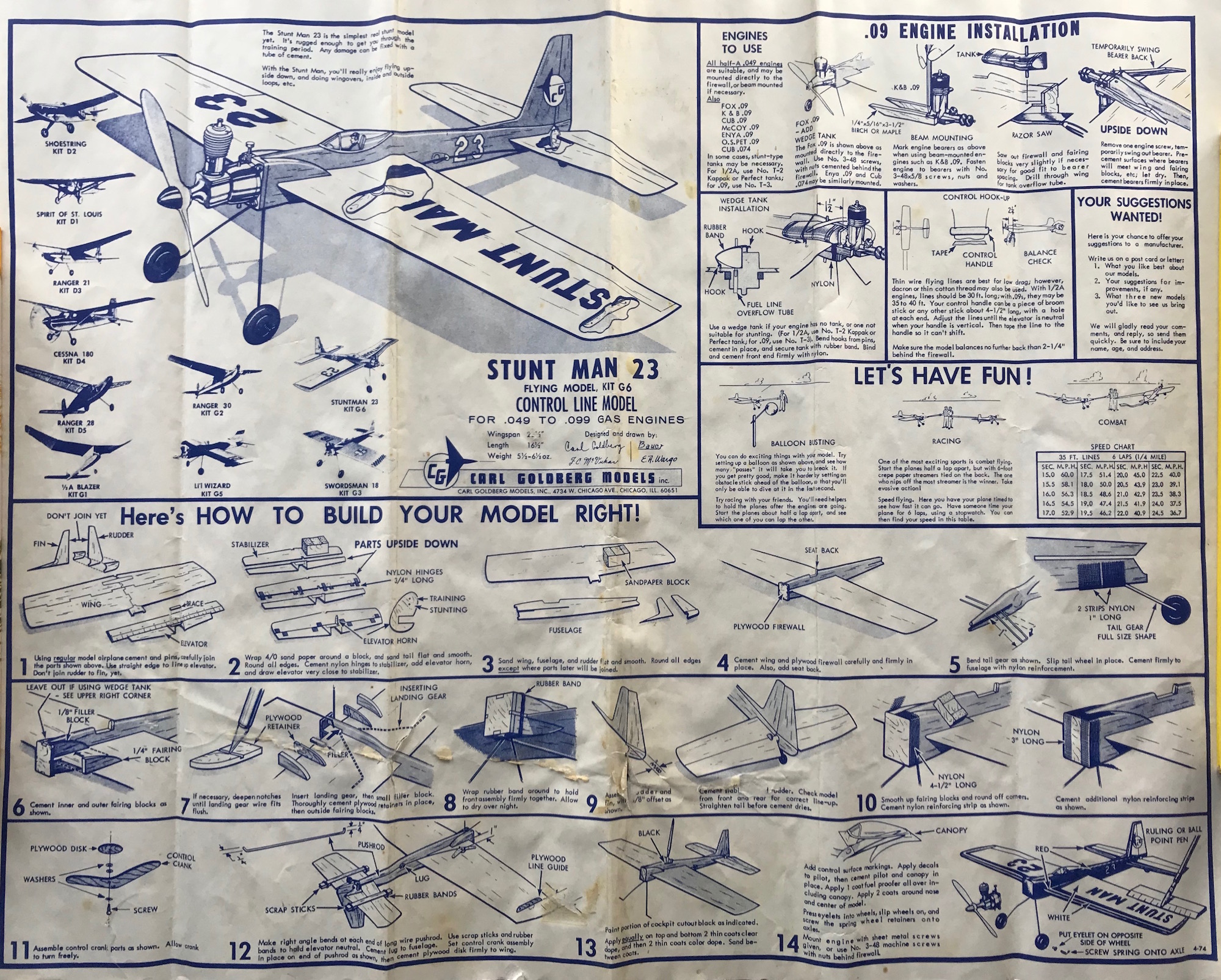
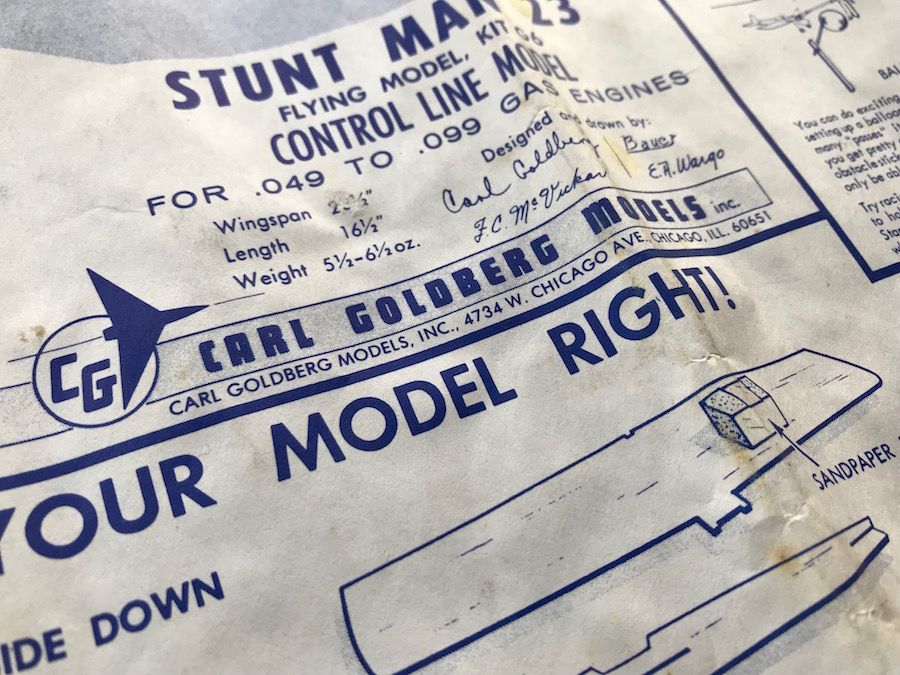
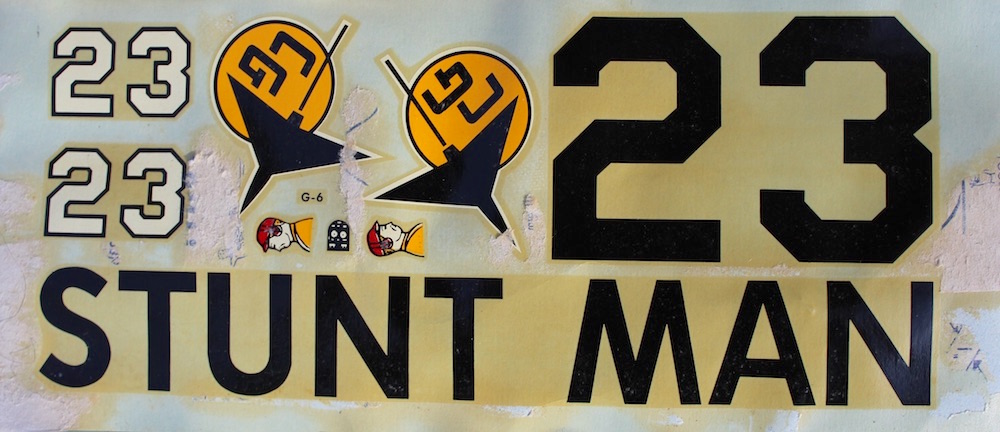
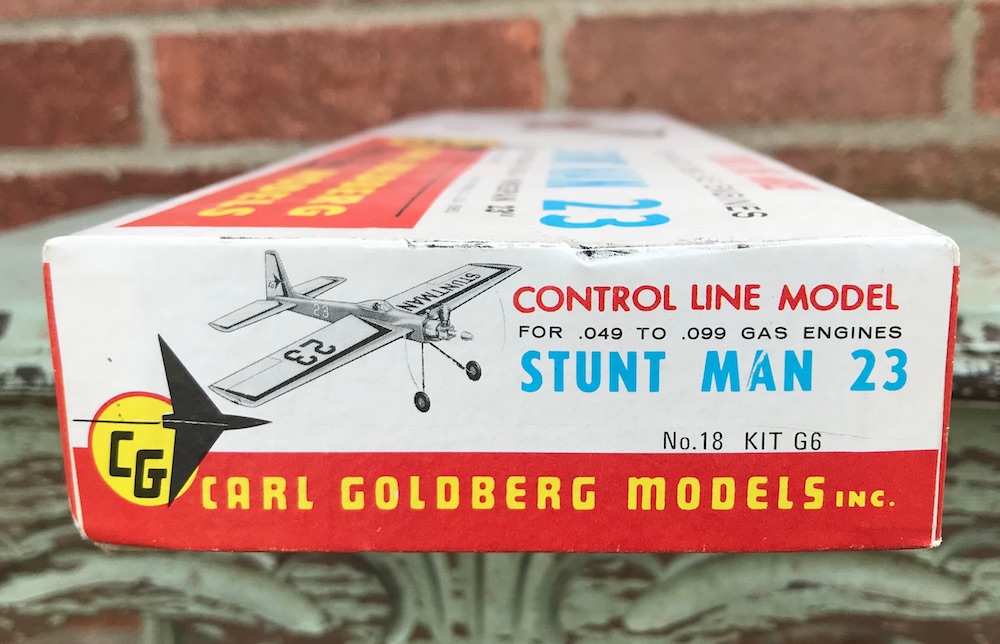
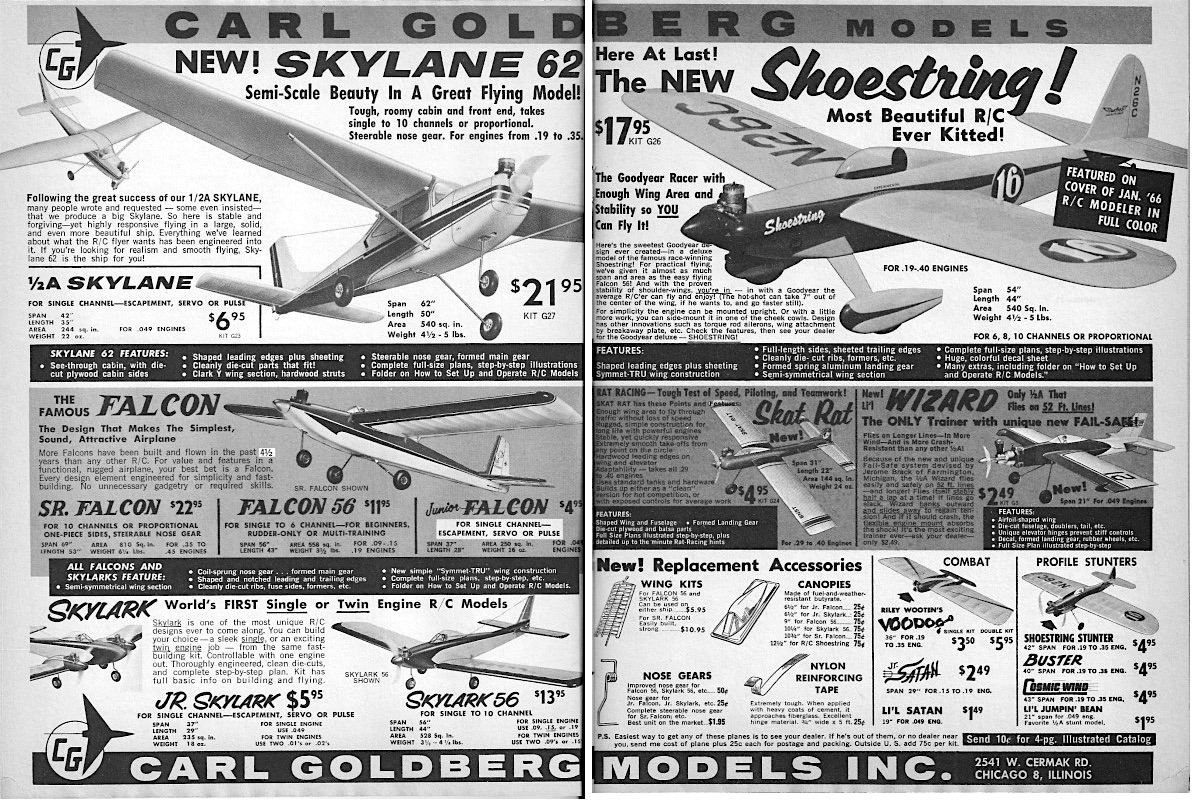 [1967 Carl Goldberg Models ad]
[1967 Carl Goldberg Models ad]
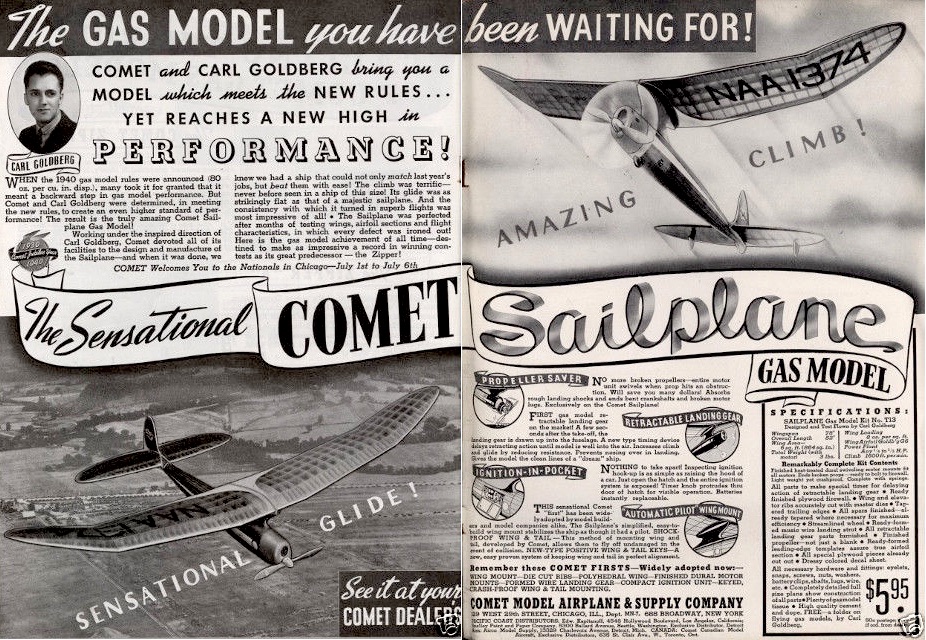 [Comet ad from 1940 ft. Carl Goldberg’s gas model Sailplane]
[Comet ad from 1940 ft. Carl Goldberg’s gas model Sailplane]
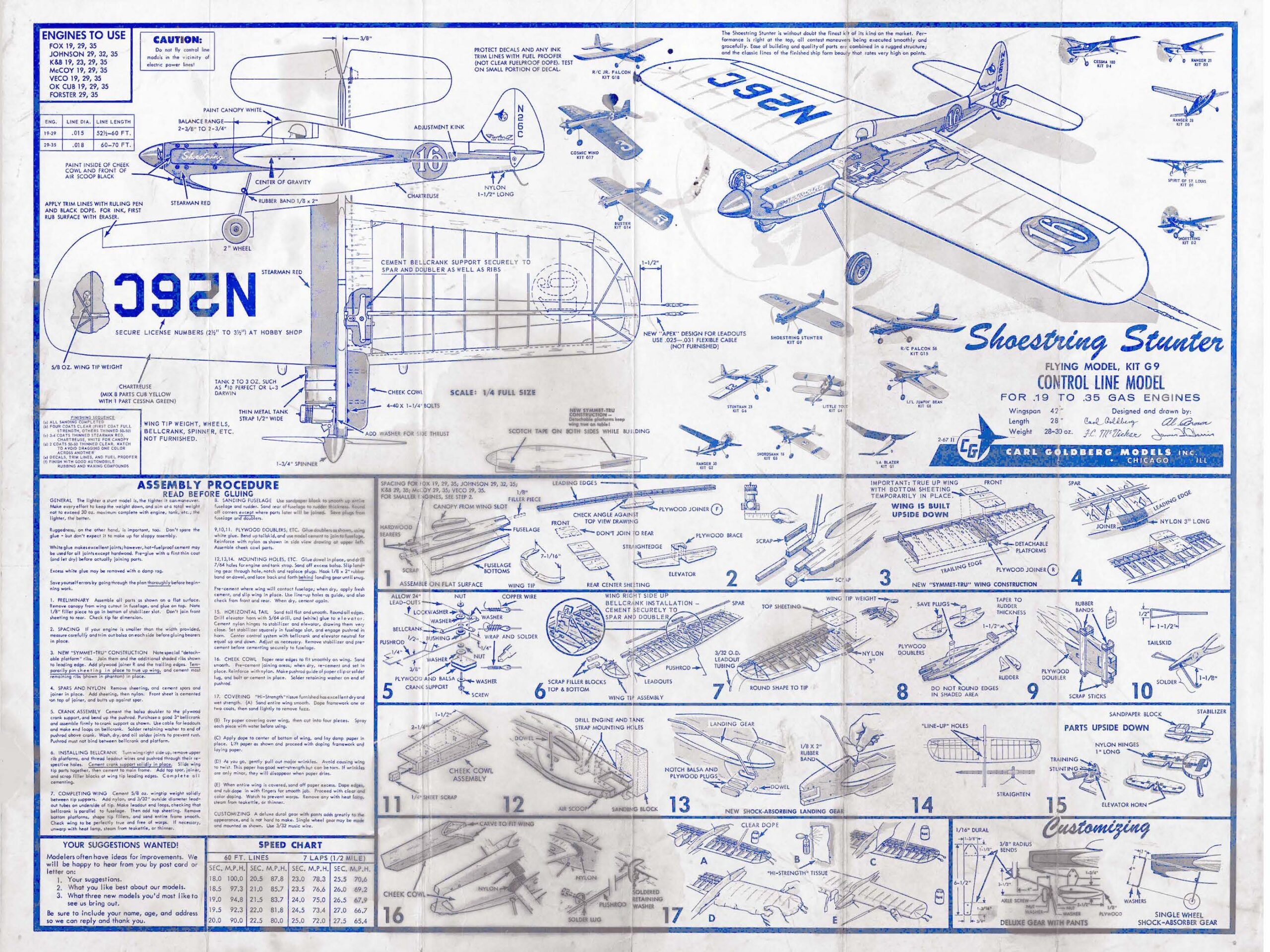
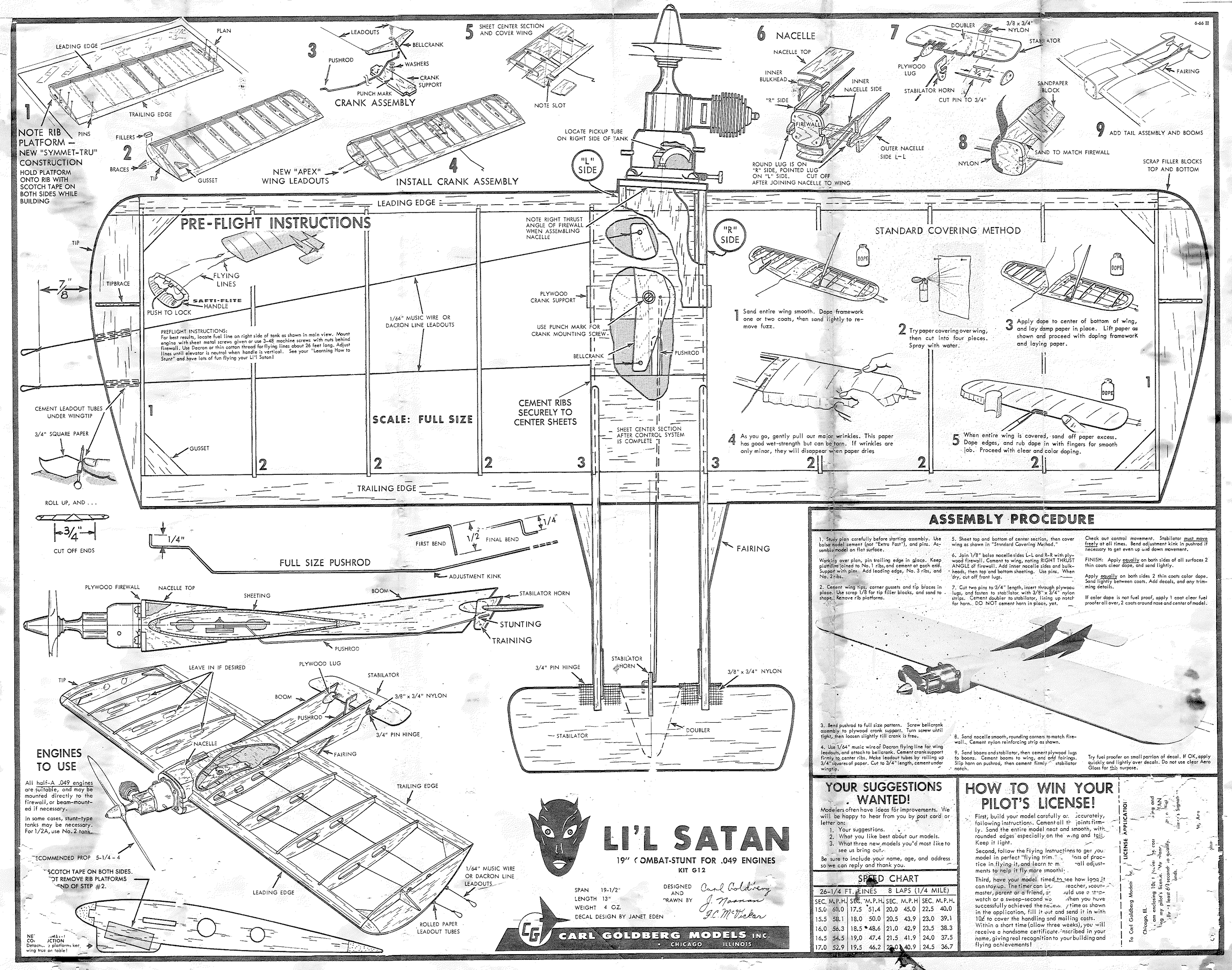
SOURCES:
“Carl Goldberg” – Model Aviation magazine, November 2012
“Rubber Band Model Zooms 50 Miles an Hour” – Tampa Bay Times, Dec 27, 1953
“Model Wizard to Address Newhio Members on March 12” – Dayton Daily News, Feb 25, 1940
“Sophomore Gains Recognition” – UP Wire, March 9, 1933
Chicago Aeronuts History Project – chicagoaeronuts.com
“Comet Model & Supply Company / Comet Model Hobbycraft” – OldWoodToys.com
AMA History Project Presents: Biography of Carl Goldberg
“Incentives for Employees Can Help Wee Businesses” – The News-Leader (Springfield, MO), July 21, 1985
“Airplanes Propel Goldberg Expansion” – Greater North Pulaski Business News, Vol. 7, No. 4, Aug/Sept 1986
A Brief History of Monogram Models: The First 40 Years, by Robert Reder, 2000
Archived Reader Comments:
“Thank you for a great article. One of my first RC models was a Goldberg Falcon Jr.” —Steve Kranish, 2020
“Great article, I too was born in 1962. My first U-control was a Little Toot powered by a cox 0.20 PeeWee. My favorite 1/2a was the Little Jumping Bean; I had several of those. Very fun to build. Spent hours and days building and flying them in the field behind my house. One year a few other kids in the neighborhood joined in and bought a couple of Little Wizards. Great memories.” —Phillip Riel, 2020
“WOW … super article! I was born in 1962 and grew up flying U-control planes. I first started with pre-built Cox and Testors then graduated to building kits. I still have a few engines and a few unbuilt kits … maybe I will get time to build and fly them if I ever retire  . It is interesting to me the parallels of this story and the electronics explosion of the early 50’s. If you think of Comet as the Bell Labs of model airplanes, it spawned countless companies from it’s employees.” —Michael Csele, 2020
. It is interesting to me the parallels of this story and the electronics explosion of the early 50’s. If you think of Comet as the Bell Labs of model airplanes, it spawned countless companies from it’s employees.” —Michael Csele, 2020
“I’m currently attempting to correct a statement made by the AMA in that woman named Dolly Wicher designed s plane that Carl Goldberg later called the falcon 56. If anyone can set me straight on the original designer, I’d appreciate it.” —Jim, 2020
“Carl Goldberg Models were our favorite to fly in the 70’s. My favorite was the Stuntman 23 because you could actually glide it to a perfect landing after the engine cut.” —AGB, 2019

Hy…i am loking for a f16 Military drone from the 80’s…for information please Massage me…regards jochen
What a fantastic article! being born in 1961, I feel so blessed to have enjoyed so much of what these Chicago companies produced. I would love to see how many of the old properties still stand! I remember years ago, While I was in the Navy, On the phone with a woman from the Comet Model Company! She was so sweet and helpful. I remember it like it was yesterday!
Looking for instruction booklet for Electra deluxe ?
Dog ate mine
Have a Carl Goldberg Models Inc. transmitter P/N 720311 anyone have any information on this transmitter? Serial # 77565.
Bonjour à tous,
En effet un article bien fait, sur un grand nom de l’aéromodélisme, et j’adore la vidéo !!
Carl Goldberg was and remains a hero to me. Regrettably I never met him in person, though I came close. I’ve built many of his models, and still have them all. They are all flyable, though some are nitro powered and I fly only electric now. But they could be converted. The article about Carl doesn’t mention his prowess and winning skills with indoor microfilm endurance models. He was an American original, and a champion in every sense of the word.
Paul Spreiregen, Washington DC.
Paul any interest in selling any of them?
Have built more than 20 Carl Goldberg kits, beginning in 1960. I built 8 Skylane 60 in wingspan kits. Built the last one in 2009 and still fly it on floats. I plan to build an electric version soon.
I was born in 1946 and started buying MAN mag at age 9. I have been a subscriber to Model Aviation my whole life…am reading the latest printed ver now. My first order from AHC in NY was an engine (.049 Aurora, a starting kit , fuel) and cost only a few dollars…I still have the invoice.
Carl Goldberg was/is my hero!
Ron, AHC, Americas’ Hobby Center right?……I remember years ago, on the phone with The Comet Model Company 30 or 40 years ago! This was a time when the model airplane kit industry was waning! I loved calling the different companies to place an order!……Imagine that, calling in to place an order! I still have many Vintage engines, plans, and a handful of kits. I work part-time at one of the last real hobby shops in my state (in Florida) I occasionally come across new old stock kits from Sig, Midwest, Carl Goldberg ect. The Hobby has definitely changed. I remember having a negative attitude when they introduced the “ARF”! Feel free to contact me it would be great to talk about modeling with an old pro!
Saludos a todos y solo necesito un cowling para shukoi 26 de carld golberg..donde y como lo consigo…..gracias.jorge comas.
In search of the ranger-30 anyone know where I can find one?
I grew up flying Carl’s designs. The Stunt Man 23 was my first gas’er
An excellent article on a man I have admired for many years. As an old (81) free flighter , I have flown many of Carl’s designs over the years. His Sailplane design served as the basis of Bob Hunter’s Satellites, which still compete today. Since I live about a mile from Carl’s home in Northridge, California, I would often see him taking a brisk morning walk along Rinaldi St. It was with great sadness that I learned of his passing.
Lee Hunt
I was 1 of the 1st users of Carl’s models. Flew them in many contests. Won some.
I am presently 91. They are endearing memories. His mother had a shop near
Cosminsky Baseball Park.
I recall that Mr. Goldberg was involved in a RC controlled aircraft that followed Lindbergh’s’ air route across the Atlantic. It was detailed in a modelers’ magazine which my Mother discarded.
I have tried to locate details of the flight but with no success.
Stephen Hashioka DDS
Chicago
I grew up about five blocks east of the factory. I used to rummage around the factory back alley looking for scrap materials.
Stephen, that is a fantastic memory!…..I wish I would have known you then, That sounds like something I would have loved to have done as well!
I grew up in Northwest Indiana, I would fly mostly control line, but I am still fascinated with free flight! I hope you are well…..Mac
I have Brand new still wrapped in plastic,”Little toot” model can anyone tell me the price of this is?
I was lucky enough to end up with two Carl Goldberg Stuntman 23 models,one kit was open i am working on it now and almost have it all put together all the parts seem to be there, just one sheet of the balsa had been broken apart ,the number on the box is No18 kit G6,I was wondering could that really be the 18th one he had sold.im sure they sold thousands if not millions of them is there a way i could tell what year it was built ?,the other one is brand new still wrapped up in plastic i did not notice the number on it yet.
Anyone still manufacturing Carl Golberg contol line stunt panes such as the Ringmaster?